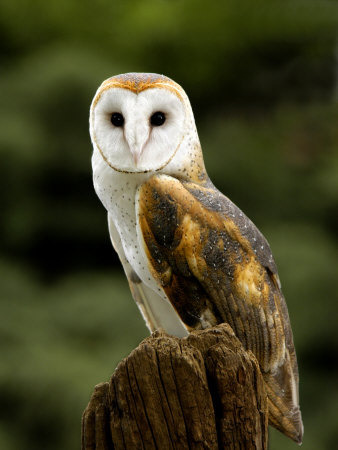The Soft, Slow, Deadly Flight of Owls
 Owls need to wing down through the dark almost silently, to hear–and avoid being heard by–their prey. They have to be good because a barn owl, for instance, needs to find and eat about six vole-sized rodents a night. The secret of their extraordinary stealth lies in their ability to fly slowly, according to Thomas Bachmann, from the Technical University Darmstadt in Germany. He presented his study of barn owl wings at the Society for Integrative and Comparative Biology's annual meeting in Charleston, South Carolina. BBC Nature reports:
Owls need to wing down through the dark almost silently, to hear–and avoid being heard by–their prey. They have to be good because a barn owl, for instance, needs to find and eat about six vole-sized rodents a night. The secret of their extraordinary stealth lies in their ability to fly slowly, according to Thomas Bachmann, from the Technical University Darmstadt in Germany. He presented his study of barn owl wings at the Society for Integrative and Comparative Biology's annual meeting in Charleston, South Carolina. BBC Nature reports:
To find out how they managed to fly so slowly and quietly, Dr Bachmann examined the birds' wings in minute detail.
He examined the plumage and took 3-D medical scans of their skeletal structure.
The wings' most important features, he explained, were the high curvature or "camber" … This curvature means that each wing beat produces more lift.
Air flow is accelerated over the upper surface the curved wing. "So the pressure drops," he said. "[And] the wing is sucked upwards into the lower pressure on the upper wing surface."
The fine feathery fringes of each wing also help silence the owl's flightThe feathery edges of each wing are also extremely fine – reducing any loud turbulence during flight, explained Dr Bachmann.
"Friction noise between single feathers is also reduced [by] their velvety surface," he told BBC Nature.
In fact, Dr Bachmann explained, "all the body parts of the owl are covered by very dense plumage – owls have more feathers than other similarly sized birds".
This soft, dense plumage absorbs other sounds the birds make as they fly.
It turns out Bachmann is interested in barn owl flight mainly as a model for biomimicry in aviation engineering. Here's part of the extract for one of his recent papers:
Barn owl feathers at the leading edge of the wing are equipped with comb-like structures termed serrations on their outer vanes. Each serration is formed by one barb ending that separates and bends upwards. This structure is considered to play a role in air-flow control and noise reduction during flight. Hence, it has considerable potential for engineering applications, particularly in the aviation industry. Several publications have reported possible functions of serrations at artificial airfoils. However, only crude approximations of natural serrations have so far been investigated … Confocal laser scanning microscopy was used for a three-dimensional reconstruction and investigation with high spatial resolution. Each serration was defined by its length, profile geometry and curvature. Furthermore, the orientation of the serrations at the leading edge was characterized by the inclination angle, the tilt angle and the separation distance of neighboring serrations. These data are discussed with respect to possible applications of serration-like structures for noise suppression and air-flow control.
For more about barn owls, visit http://www.barnowltrust.org.uk











